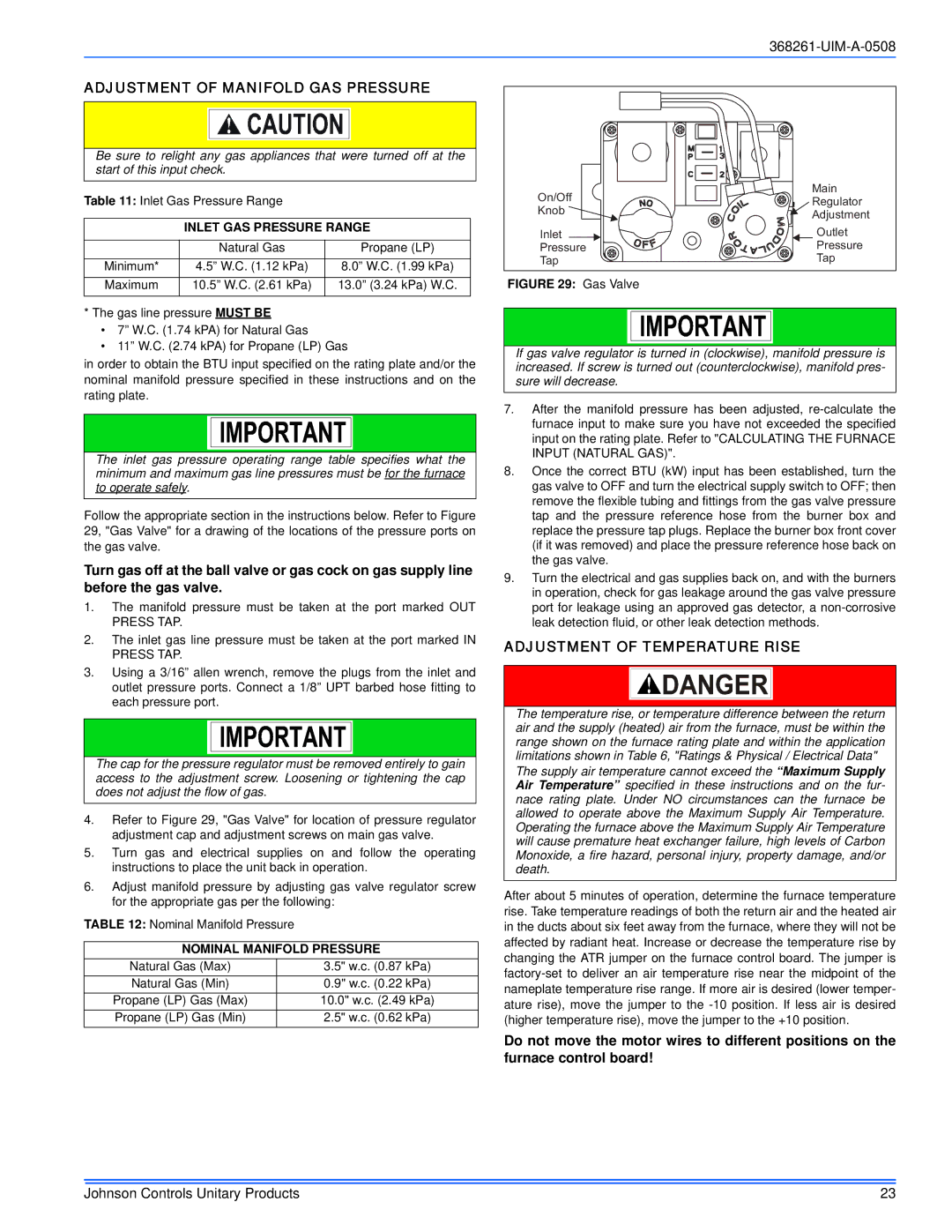LM8M/LMLM*MP, TM8M/TMLM*MP, CM8M/CMLM*MP, YM8M/YMLM*MP specifications
Johnson Controls TM8M/TMLM*MP, YM8M/YMLM*MP, LM8M/LMLM*MP, and CM8M/CMLM*MP are advanced temperature controllers designed for a wide range of applications in heating, ventilation, and air conditioning (HVAC) systems. These models stand out due to their robust features, cutting-edge technologies, and specific characteristics that cater to both residential and commercial environments.One of the main features of the TM8M/TMLM*MP series is its user-friendly interface that incorporates a large, easy-to-read display. This allows for quick adjustments and monitoring of temperature settings, making it accessible for both skilled technicians and everyday users. The intuitive design ensures that users can efficiently navigate through various settings and configurations.
Another notable characteristic is the flexibility of these controllers. The series supports multiple sensor configurations, enabling the integration of both wired and wireless sensors. This adaptability allows users to customize their climate control systems according to specific needs and room layouts, ultimately enhancing comfort and energy efficiency.
The TM8M/TMLM*MP and its counterparts are equipped with sophisticated algorithms that optimize energy consumption. By utilizing predictive maintenance and intelligent analytics, these controllers can adjust settings dynamically based on real-time data. This not only helps in reducing operational costs but also prolongs the lifespan of HVAC equipment.
Incorporating advanced communication protocols is a hallmark of the Johnson Controls series. The TM8M and CM8M models support modern systems such as BACnet and Modbus, allowing seamless integration with building management systems (BMS). This compatibility ensures that users can maintain centralized control over multiple systems, enhancing overall operational efficiency.
Additionally, the series is robustly constructed to withstand harsh environmental conditions. Its durable casing and reliable components ensure long-term performance, making it suitable for a variety of settings, including industrial facilities and commercial properties.
Safety features are also integral to the design of the TM8M/TMLM*MP and related models. Built-in safeguards protect against over-temperature and other potential hazards, ensuring reliability and peace of mind for operators.
In summary, Johnson Controls TM8M/TMLM*MP, YM8M/YMLM*MP, LM8M/LMLM*MP, and CM8M/CMLM*MP controllers represent a convergence of user-friendly design, advanced technology, flexibility, and safety. Their ability to adapt to diverse applications while optimizing energy use makes them a critical component in modern HVAC systems, ensuring comfort and efficiency in every environment.

